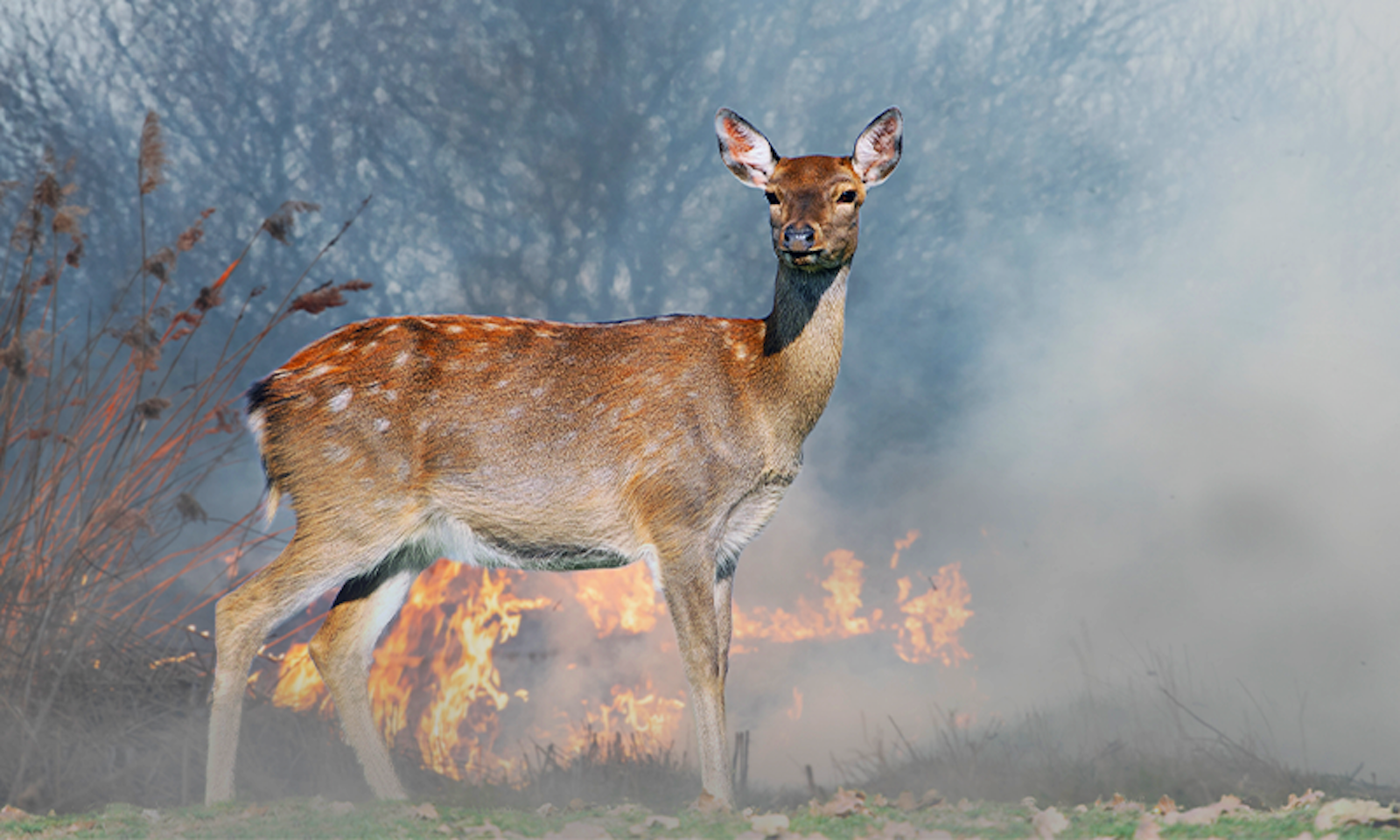For millennia, frill-necked lizards on the northern Australian savannah have instinctually scurried up tree trunks when they sensed an approaching grassfire. This dash usually protected them—and their genetic lineage—from burning to a crisp.
But in the 1990s, invasive gamba grass swept into their habitat. Now, fires fueled by this tall, dense grass burn hotter and higher, tearing through the tree canopies as well. And the lizards’ well-honed fire adaptation is now very much “the wrong kind of fire response,” says Gavin Jones. Their survival instincts have instead become a death sentence. Will some lizards evolve a different behavior to survive this more intense breed of fire?
The effect of fire on life on Earth cannot be overstated.
For Jones and others, this is a burning question. He is a research ecologist with the United States Forest Service and the lead author of a new review paper that examines the evolutionary pressures wildfires exert on animals—and what might lie ahead for different species in the Pyrocene.
Fire might seem an unlikely force for lasting evolutionary change. It’s a flash in the pan, and then it’s gone, not returning to an area sometimes for hundreds of years. But the fire itself is a powerful event—with the ability to wipe out entire gene pools if they don’t survive by fleeing or sheltering. And it leaves behind a radically changed landscape. “The evolutionary environment of animals is what’s important,” Jones notes. And fire is endemic to all landscapes where there is fuel and an ignition source. “The effect of fire on life on Earth cannot be overstated,” Jones says.

Many plants have well-known adaptations to fire. Ponderosa pines have developed thick bark to protect themselves, and the lodgepole has pinecones that depend on the heat of fire to open and release seeds. But fire’s influence on animal evolution has been more difficult to pin down.
Jones notes that many animal adaptations to surviving—and even thriving—with fire are related to sensing a nearby conflagration: smell, sound, sight, and, in some cases, even infrared detection. The black fire beetle prefers to lay eggs in newly burned areas where their young can feast on the freshly released nutrients. So, instead of using their senses to flee fire, a dedicated, infrared-sensing organ on their thorax actually points them toward flames. They like smoke, too. When I speak with Jones, he has a classic book handy—Fire Ecology of the Pacific Northwest Forests—and reads me an unexpected excerpt:
At University of California football games with 20,000 or so cigarettes ablaze at any time (… this was the 1940s), a haze of tobacco smoke would hang over Memorial Stadium. Melanophila beetles would “annoy patrons by alighting on the clothing or even biting” during a big game, which was more disturbing to fans than a Stanford touchdown.
Although the black fire beetle’s evolved infrared sensor is Jones’ favorite animal adaptation to fire, he has spent much of his career studying the behavior of a larger winged animal in California: the spotted owl.
Their survival instincts have instead become a death sentence.
These owls have a strong preference for hunting in patches of forest that have recently burned. But not just any patches. Specifically, those of about 25 acres, which are large enough for them to spot prey—but small enough for them to find cover and avoid becoming prey themselves. When Jones and his colleagues dug into the literature, they found that 25 acres is also the average size of historical burns within the owl’s range: The owl evolved behavior to take advantage of this feature of the landscape. But the vast megafires of today create far more massive burn scars with little cover to protect against predation, turning the owl’s adapted preference for hunting in recently burnt forest into a liability.
Australian animal ecologist Dale Nimmo and his colleagues, in a paper last year, deemed our contemporary megafires “Darwinian guillotines,” for their ability to abruptly lop off populations that had once lived in relative balance with fires.
But fire is also a rare evolutionary force that humans can play with—for worse or for better.
It’s likely that the lack of naturally paced wildfires over the past century and a half has had a negative impact on animals’ ability to live with fire, Jones says. But humans might be able to turn toward managed fire as a way to help animals keep or improve their fire-tuned adaptations. As Jones notes, though, managed fire is not a surefire solution for guiding animals safely through the Pyrocene. The big question, he says, is whether evolution can keep up with the growing flames. ![]()
Lead image: Volodymyr Burdiak / Shutterstock




























